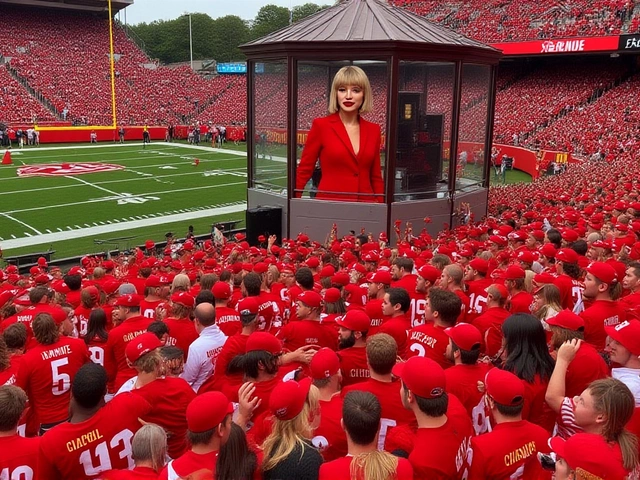Rookie nerves? Not in the fourth quarter
On a loud Monday night in Chicago, down 17-6 after three quarters and still searching for their first third-down conversion, the Minnesota Vikings needed someone to stay calm. That turned out to be J.J. McCarthy, a 21-year-old rookie starting his first NFL game in his hometown area, who settled the offense and engineered a 21-point fourth quarter to beat the Bears 27-24.
What changed? The huddle got quiet. The reads got faster. And when McCarthy finally found a rhythm, he did it by trusting the franchise’s most dependable star. With just under three minutes left, he fired a 13-yard touchdown to Justin Jefferson that snapped the funk and flipped the mood on the sideline.
Jefferson didn’t sugarcoat how shaky the first three quarters felt. “We kept our head up, we kept our composure and we kept fighting,” he told ESPN’s Scott Van Pelt. He doubled down on a core truth players live by: momentum can turn a game in seconds, and you never know which play will crack the dam.
Once it did, the game opened up. On the next meaningful possessions, McCarthy dropped a 27-yard touchdown to running back Aaron Jones, then tucked and ran for a 14-yard score that put the Vikings on top for good. For a debut in prime time, against a division rival, on the road, it was the kind of finish that earns a locker room’s trust fast.
The stat line will grab headlines, but the subtler part mattered more: timing. Early on, Minnesota couldn’t string snaps together. Drives stalled, the chains wouldn’t move, and the Bears kept the Vikings uncomfortable. In the fourth, McCarthy sped up his operation, leaned into quick-game concepts, and let Jefferson win on leverage. That 13-yard touchdown to No. 18 didn’t just put points on the board—it was a release valve for an offense pressing too hard.
Jefferson has worn the voice-of-calm tag before, but this felt pointed. He said he reminded teammates at halftime that they weren’t out of it and that a single drive could tilt the night. After his touchdown, you could see the tension drain from McCarthy’s body language. The ball came out on time. The Vikings used tempo to keep the Bears from disguising coverages. Simple throws turned into explosive plays as Chicago’s defense backed off.
There was a glimpse of the pairing Minnesota has banked its future on: Jefferson uncovering at the top of routes and McCarthy placing the ball where only his star could get it. Earlier in the game, they connected on a 17-yarder to jump-start a drive, a modest gain that hinted at trust. In the fourth quarter, that trust turned into scoreboard swings.
You won’t find many rookies who start their career on Monday Night Football, in their home market, and end it with a comeback against a division rival. The Vikings have spent months shaping the environment around their young quarterback—steady protection calls, defined reads, an outlet in Jones, and the league’s best separator on the outside. When it finally clicked, the plan looked exactly as drawn.

Jefferson’s voice, the turning point, and what it means
Every team talks about leadership; this is what it looks like. For three quarters, Jefferson kept the sideline from spiraling. He didn’t point fingers. He told a rookie to keep swinging. He reminded veterans that the math said one drive could change everything. Then he made the first play that mattered most—a contested touchdown that forced Chicago to defend the full field and freed the Vikings to call the game on their terms.
“Momentum is a crazy thing,” Jefferson said. He’s right. After that score, Minnesota played faster and cleaner. Protection held up just a beat longer. McCarthy’s feet settled. The Bears’ pass rush lost a touch of its edge as the ball left early. The ripple effect was obvious even in small moments—checkdowns got turned upfield, and second-and-long became manageable third downs instead of punts.
There’s also the context of the moment for Minnesota. This is the first year of a new quarterback era, and the organization staked a top draft pick on a calm operator who could grow week to week. It was never going to be perfect in Week 1. But composure translates, and that was the headline trait on display in the final 15 minutes. McCarthy didn’t force throws that weren’t there; he found the matchups that were—Jefferson on choice routes, Jones on linebackers, and space in the red zone when the defense widened to account for the outside threats.
Jones’ presence matters more than one touchdown suggests. He’s a built-in pressure release for a young quarterback, a veteran who can align all over the formation and win one-on-one. That 27-yard strike was a trust throw, and it punished Chicago for tilting coverage toward Jefferson. Add in a quarterback who’s willing to take yards on the ground—like the 14-yard keeper that capped the surge—and the shape of an offense starts to emerge: spread the ball, make the defense wrong, live with singles until doubles show up.
The Bears will look at the film and kick themselves for letting the game get loose late. Through three quarters, they owned the pace. They forced empty drives, won field position, and made the rookie think. Then one touchdown unlocked everything. That’s the NFL story as old as the two-minute drill—you can play 45 good minutes and still walk off the field stunned if the last 15 belong to the other side.
For Jefferson, nights like this stack up in two ways. He’s already the engine of Minnesota’s passing game, but he’s also the thermostat for the locker room. Publicly, he framed the win around resilience, not fireworks. Privately, teammates see who he is when things wobble—a star who still does the basics, runs hard, and demands the ball without drama. When your best player carries that tone, the fourth quarter feels less like a cliff and more like a climb.
For McCarthy, the lessons are practical. Prime time on the road isn’t about a perfect script; it’s about surviving the first storm and staying within yourself long enough to find answers. He did that. He made throws into tight windows when they mattered, protected the ball, and leaned on veterans who have seen every coverage the league can throw. That’s how a debut becomes a growth point instead of a memory you try to forget.
There will be tougher fronts ahead, faster secondaries, and weeks when the run game needs to carry more of the load. There will be tape for defenses to study and counters Minnesota will have to build. That’s the season. But starting 1-0 in the division, on a field that has tripped up plenty of visitors in September, tells you something about how this team intends to win—defense and special teams keeping the door open, stars lifting late, and a rookie quarterback who looks like the moment belongs to him.
And yes, the third-down stat that haunted the first three quarters will linger in the building this week. Coaches will hammer it. Players will hear it. But the more telling number was the fourth-quarter surge: three touchdowns on three crucial drives, capped by a quarterback who looked unfazed when the stadium got loudest.
One night does not define a season or a career. But you can spot traits that travel—poise under pressure, a willingness to take the profitable throw, and chemistry with a No. 1 receiver that tightens when the lights get bright. On Monday, those traits carried the Vikings out of a hole and through a finish that felt seasoned, not shaky. For a franchise turning the page at quarterback, that’s as strong a first sentence as you could write.



